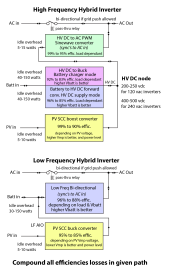Can someone confirm this?... I am reinstalling my system because i will install my own diy battery to my Growatt, but my battery is not finished yet.
I have connected the inverter input to the grid and the output to my home loads. I Measured (at night) with a clamp ampere meter to the input and measure around 3 amp consumption (690w) At the output i measure 1,7 amp (391w) the visual power on the app are soft is 344w input and 337w output ???
I have connected the inverter input to the grid and the output to my home loads. I Measured (at night) with a clamp ampere meter to the input and measure around 3 amp consumption (690w) At the output i measure 1,7 amp (391w) the visual power on the app are soft is 344w input and 337w output ???




